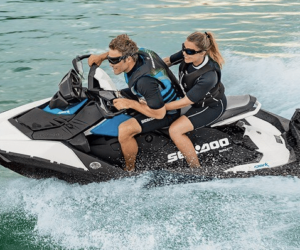Sailing checklist before casting off: What you should check before setting off

1. Check the weather forecast
Before you leave the boat, you should always check the current weather forecast. Pay particular attention to wind speed and direction, precipitation and warnings of possible storm or thunderstorm fronts. Remember that the weather at sea can change quickly. So be prepared for different scenarios and plan your route accordingly.
2. Check boat equipment
Your boating equipment is your lifesaver at sea. Make sure that all important items are in good condition:
- Life jackets: Are there enough life jackets for everyone on board? Check that they are all in good condition and ready to hand.
- Signalling devices: Check the signal rockets, signal horns and torches. These should be in working order and easily accessible.
- Life raft: If you have a life raft on board, check its condition and make sure that it has not expired.
- Fire extinguisher: Ensure that all fire extinguishers on board are charged and easily accessible.
- First aid kit: Check that the first aid kit is complete and update it if necessary.
- Radio: Test your radio and check the batteries or the charge status.
3. Check technical systems
The technology on board must function perfectly so that you can travel safely:
- Engine: Check the engine oil level, the coolant level and the function of the alternator. Listen for unusual noises or vibrations.
- Fuel: Make sure there is enough fuel on board and check the filters for contamination.
- Batteries: Check the charge status of the batteries and test all electrical systems, including lighting and navigation devices.
- Rudder and steering: Make sure that the rudder can move freely and that the steering system functions smoothly.
4. Inspect sails and rigging
A functioning sail is the centrepiece of your boat. Therefore, make sure that everything is in perfect condition:
- Sail: Check the sails for tears, worn seams or other damage. Are the sails properly attached?
- Pods and traps: Check all lines for wear and tangles. Make sure that all blocks and winches run smoothly.
- Mast and shrouds: Inspect the mast and shrouds for cracks, corrosion or loose fittings. Make sure that the mast is secure and shows no signs of movement.
5. Navigation and safety equipment
To reach your destination safely, your navigation equipment must work reliably:
- Charts and plotters: Make sure you have up-to-date nautical charts and a functioning navigation device on board. Plan your route in advance.
- Compass: Check the compass for accuracy and functionality.
- Lifebuoys and lifebelts: Make sure that lifebuoys and lifebelts are ready for use and are stowed within easy reach on board.
- Emergency positioning: Make sure that your EPIRB (Emergency Position-Indicating Radio Beacon) or PLB (Personal Locator Beacon) is in working order and that you know how to use it in an emergency.
6. Catering and water
Don’t forget to take enough provisions and water with you, especially if you plan to stay at sea for a longer period of time:
- Water: Calculate your water requirements and pack additional reserves.
- Food: Make sure you have enough non-perishable food on board that can be easily prepared even in bad weather.
- Emergency rations: A few extra rations in case of unexpected delays can’t hurt.
7. Personal equipment
Last but not least: your personal equipment. Make sure you have everything you need with you:
- Weatherproof clothing: Take weatherproof clothing that will keep you warm and dry.
- Sun protection: Remember sun cream, sunglasses and a hat.
- Seasickness: If you or someone on board is prone to seasickness, pack appropriate medication.
Our summary
Thorough preparation is the be-all and end-all for a successful and safe sailing trip. With this checklist, you are ideally equipped to set sail and enjoy your adventure to the full. Remember: a safe start is the best prerequisite for a safe arrival.
















